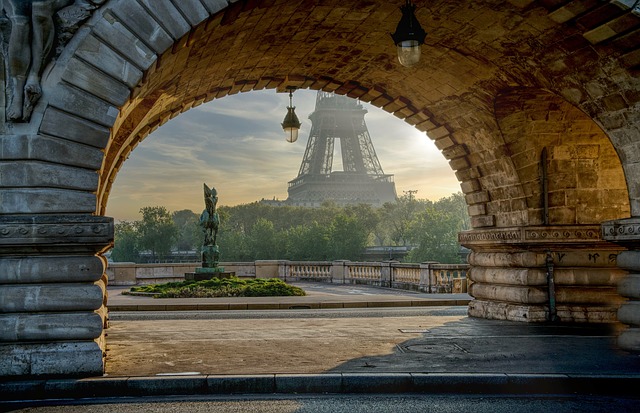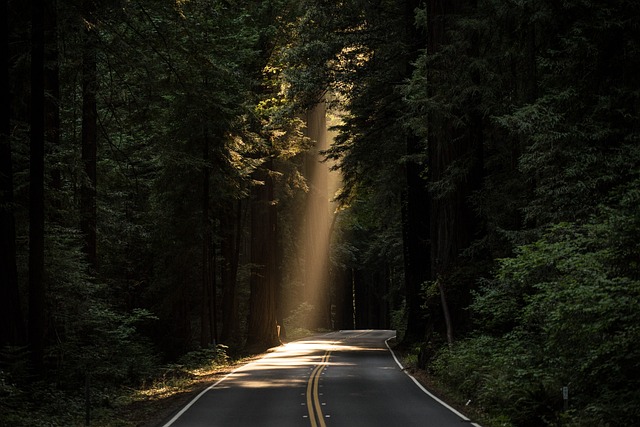Winding Paths: The Untold Stories of Iconic Roads
Throughout history, roads have served as the lifelines of nations, connecting communities and facilitating trade, travel, and cultural exchange. While many roads are recognized for their utility, some stand out not only for their engineering prowess but also for the rich stories and legends that accompany them. These winding paths tell tales of adventure, challenge, and the human experience, weaving through diverse landscapes and histories. This article explores some of the most iconic roads in the world, delving into the untold stories that give them character and significance.
The Silk Road
Perhaps one of the most famous trade routes in history, the Silk Road was not a singular path but rather a network of trade routes that connected the East to the West. Originating in China and stretching through Central Asia to Europe, this winding path fostered not only the exchange of goods like silk, spices, and precious metals but also of ideas, culture, and religion.
The untold stories of the Silk Road are as varied as the goods traded along its length. The route facilitated the spread of Buddhism from India to China, allowing it to influence millions. Moreover, it was a significant conduit for caravans laden with silk, which dazzled European royalty, symbolizing wealth and luxury. Travelers faced numerous challenges, from harsh deserts to treacherous mountain passes, encountering diverse cultures and forging connections that transcended borders. The Silk Road remains a testament to the resilience of human endeavor and the unquenchable thirst for knowledge and exchange.
The Pacific Coast Highway
Running along California’s coastline, the Pacific Coast Highway (PCH) is renowned for its breathtaking views and dramatic cliffs. Officially called California State Route 1, this iconic stretch of road is more than just a scenic byway; it is a showcase of America’s natural beauty and cultural heritage.
The PCH winds through charming seaside towns such as Carmel-by-the-Sea and Santa Barbara, each with its own unique story. The road itself was born out of necessity, as many coastal communities needed access to resources and markets. The construction began in the early 1930s, providing jobs during the Great Depression. However, nature posed significant challenges, with landslides and rough terrain threatening the project. Yet, this determination gave rise to one of America’s most celebrated drives, where every twist and turn offers breathtaking vistas of the Pacific Ocean, inspiring generations of travelers and artists alike.
The Autobahn
Germany’s Autobahn is often celebrated for its stretches without speed limits, but its history is filled with more than just fast cars and engineering marvels. Originally conceived in the 1920s as a means of promoting the automotive industry, the Autobahn played a pivotal role during World War II as it facilitated troop movements and logistics. Post-war, the road system underwent a significant transformation, becoming a symbol of economic recovery and technological advancement in a divided Germany.
The untold stories of the Autobahn are entwined with the narratives of the people who used it. From families embarking on road trips to business professionals racing to meet deadlines, the highway has seen it all. Even today, it represents a blend of modernity and nostalgia, linking people across the nation while reminding them of Germany’s tumultuous past. Interestingly, the open-speed stretch has sparked debates across the globe, reflecting a societal fascination with freedom, safety, and responsibility on the roads.
The Route 66
As American as apple pie, Route 66, known as the “Main Street of America,” symbolizes freedom, exploration, and the American dream. Stretching from Chicago to Santa Monica, it has woven its way into the fabric of American culture and history.
The untold stories along Route 66 form a rich tapestry of America’s dynamic narrative. Originally established in 1926, the road facilitated migration westward during the Great Depression, providing hope for many seeking a new beginning. It became a haven for travelers, dotted with diners, motels, and quirky roadside attractions that offer glimpses into bygone eras and the spirit of adventure.
In popular culture, Route 66 has inspired songs, films, and literature, capturing the essence of the open road and the stories hidden within it. Each stop along the route tells a story, from the iconic Wigwam Motel to the mesmerizing landscapes of the Mojave Desert, uniting generations of travelers in a common quest for connection and discovery.
The Andes Road
In South America, the winding roads of the Andes present a challenge unlike any other. The journey along these rugged paths, like the famous Yungas Road in Bolivia, is an adventure filled with breathtaking views and gripping tales of survival. Known as the “Death Road,” Yungas has a notorious reputation due to its treacherous conditions, steep cliffs, and narrow passages.
The untold stories of this road are laced with bravery and tragedy. Local legends recount the many who have lost their lives navigating the treacherous terrain, but also tales of those who have trekked the road in search of a better life. For many Bolivians, this precarious journey represents hope and the pursuit of opportunity, intertwining their fates with the unforgiving landscape. Despite its challenges, the Yungas Road attracts adventure seekers from around the globe, eager to embrace both its beauty and danger.
Historic Highway 61
Known as the “Blues Highway,” Highway 61 stretches from Louisiana to Minnesota and is deeply embedded in the fabric of American music history. This route was traveled by countless musicians, and its storied past is punctuated by legendary figures such as B.B. King and Bob Dylan.
The untold stories of Highway 61 revolve around the cultural intersections that shaped the blues genre. It was along this highway that African American musicians traveled from their homes in the South to northern cities in search of work and creative opportunities. They carried with them the musical traditions of their ancestors, melding them with the influences they discovered along the way. The road became a corridor of creativity, where the blues flowed from juke joints to concert halls, forever changing the landscape of American music.
The Great Ocean Road
In Australia, the Great Ocean Road is a winding coastal route that presents some of the most spectacular scenery the country has to offer. Built as a memorial for soldiers who fought in World War I, the road is an engineering marvel, winding its way past rainforests, cliffs, and beaches, creating a unique ecological corridor.
However, the untold stories of the Great Ocean Road go beyond its beautiful vistas. Indigenous histories underpin the landscape, with the coastal areas being sacred to local Aboriginal peoples for thousands of years. The road also plays a significant role in tourism, drawing visitors from around the world, each contributing to the ever-evolving narrative of the region. As travelers marvel at natural formations like the Twelve Apostles, they engage with the living history of the land and its people, forging connections between the past, present, and future.
The Trans-Canada Highway
Stretching across the vast expanse of Canada, the Trans-Canada Highway is one of the longest national highways in the world. It serves as a vital route for trade and travel, connecting diverse regions and cultures across the country. However, the highway is not only a feat of engineering but is also rich in untold stories that reflect the spirit of Canadian resilience and diversity.
As travelers traverse this massive stretch of asphalt, they encounter the unique environments and histories of each province. From the rolling hills of Quebec to the rugged landscapes of British Columbia, each region offers its own tales of human endeavor and natural beauty. It serves as a historical reminder of how Canadians conquered geographical barriers to connect communities and foster national identity.
The Trans-Canada Highway is more than just a transportation route; it supports a continuous exchange of culture, knowledge, and innovation, creating an intricate tapestry of life across the nation. As travelers explore its length, they uncover the stories of those who braved the elements and challenges to build connections, leading to the flourishing cultural mosaic that is Canada today.
Conclusion
The winding paths of iconic roads around the world are steeped in history and culture, each with their untold stories that reflect human experience and resilience. From the trade routes of ancient civilizations to modern highways that facilitate contemporary travel, these roads are not merely conduits for transportation but are vital to the narrative of humanity itself. As we journey down these paths, we engage with their histories, ensuring that the stories they carry continue to inspire future generations. Each road is a testament to the adventures undertaken and the connections forged, serving as a reminder that, no matter the landscape, the spirit of exploration endures.



